
In this article, I’ll be going through all the best camera phones in Nepal across different price brackets. From the absolute best ones money can buy to even the budget ones. ‘Cause no matter how expensive a phone is, I’m pretty sure most folks want a good camera experience out of it more than anything else.
And with a…ll the options you can shop from, I completely get that selecting the right camera phone can be a daunting task. Which is why our entire team sat down, had a proper discussion (and some argument), to finally come up with this buy guide for the best camera phones in Nepal. Let’s begin.
Best camera phones in Nepal 2025 (Summary)
| S. No | Smartphone | Price in Nepal |
| Best camera phones under 30K in Nepal | ||
| 1 | Samsung Galaxy A16 5G | NPR 28,999 (6/128GB) |
| 2 | Redmi Note 13 4G | NPR 27,999 (8/256GB) |
| 3 | Infinix Note 40 | NPR 27,999 (8/256GB) |
| Best camera phones under 50K in Nepal | ||
| 1 | Realme 12 Pro+ | NPR 50,999 (12/256GB) |
| 2 | Samsung Galaxy A35 | NPR 46,999 (8/128GB) |
| 3 | Redmi Note 13 Pro+ | NPR 47,999 (8/256GB) |
| Best camera phones under 70K in Nepal | ||
| 1 | Honor 200 | NPR 64,999 (12/512GB) |
| 2 | Vivo V40 | NPR 65,999 (12/256GB) |
| 3 | Samsung Galaxy A55 | NPR 67,999 (12/256GB) |
| Best camera phones under 1 lakh in Nepal | ||
| 1 | Xiaomi 14 | NPR 99,999 (12/512GB) |
| 2 | Samsung Galaxy S24 FE | NPR 94,999 (8/256GB) |
| 3 | Honor 200 Pro | NPR 84,990 (12/512GB) |
| Best flagship camera phones in Nepal | ||
| 1 | Samsung Galaxy S24 Ultra | NPR 184,999 (12/256GB) |
| 2 | iPhone 16 Pro | NPR 194,999 (128GB) |
| iPhone 16 Pro Max | NPR 232,499 (256GB) | |
| 3 | Honor Magic 6 Pro | NPR 159,999 (12/512GB) |
Best camera phones under 30K in Nepal [2025]
1. Samsung Galaxy A16 5G
Alright, so let me start with the 30K segment. And if you’re looking to buy a phone with particularly reliable cameras for that price, then the Samsung Galaxy A16 5G is a great option to consider. Samsung has always been known for its “consumer-friendly” approach when it comes to image optimization, and that’s exactly what you get with the Galaxy A16 5G as well. Just like the Galaxy A15 5G (review) before it.

The Galaxy A16 5G actually brings the same triple camera setup as its predecessor. This includes a 50MP primary, a 5MP ultrawide, a pointless 2MP macro shooter, and a 13MP sensor for selfies. And as expected from a Samsung phone, this one also takes pretty nice-looking photos. With great colors, good contrast, good details, and good dynamic range. It handles human subjects quite nicely as well, although I really would’ve liked to see a 2x option for portraits here.
I should also tell you that the Galaxy A16’s ultrawide camera and its videography side of things are nothing extraordinary. It can only shoot up to 1080p 30 fps videos from both its main and selfie camera — and although there’s no optical image stabilization of any sort — the videos turn out steady enough thanks to EIS (Electronic Image Stabilization).
Samsung Galaxy A16 5G camera specifications:
| Rear Cameras | • 50MP f/1.8, main |
| • 5MP f/2.2, ultrawide | |
| • 2MP f/2.4, macro | |
| Front Camera | • 13MP f/2.0 |
| Video | 1080p 30 fps (main, front), EIS (only on main camera) |
| Price in Nepal | NPR 28,999 (6/128GB) | Buy here |
| Check the full specifications of Samsung Galaxy A16 5G here | |
2. Redmi Note 13 4G
Alright. The Redmi Note 13 4G is another excellent choice for those searching for the best camera phone in Nepal under 30K. And unlike the Galaxy A15 5G with its modest specs, Xiaomi has gone big here. Headlined by that 108MP primary camera.

For what it’s worth, the Redmi Note 13 4G takes pretty decent photos. Its images do turn out a bit brighter and more saturated than I’d like, but that’s always been the case with Xiaomi’s budget phones so I can’t complain much. Although, surprisingly enough, the Note 13 4G’s ultrawide photos have a relatively better white balance.
And its selfies are good enough as well. A bit contrasty at times maybe but there’s an ample amount of details and everything, so yeah. Finally, in terms of videos, the Redmi Note 13 4G caps out at 1080p 30 fps recordings like most budget phones. With the actual video quality being nothing to write home about either.
Redmi Note 13 4G camera specifications:
| Rear Cameras | • 108MP f/1.75, main |
| • 8MP f/2.2, ultrawide (120° FOV) | |
| • 2MP f/2.4, macro | |
| Front Camera | • 16MP f/2.4 |
| Video | 1080p 30 fps (main, front) |
| Price in Nepal | NPR 27,999 (8/256GB) | Buy here |
| Check the full specifications of Redmi Note 13 4G here | |
3. Infinix Note 40
Moving on, our third pick for the best camera phone under 30K in Nepal is the newly launched Infinix Note 40. This is very much a “design and performance-first” phone so we weren’t expecting to be wowed by its cameras but what do you know? Turns out this budget phone’s cameras aren’t too shabby.

And when I say “cameras”, I’m only talking about its 108MP primary and 32MP selfie shooter, by the way. Since its tertiary lenses are as forgettable as they come, while Infinix has even skipped on an ultrawide camera here. Then again, like I said before, the Infinix Note 40’s other two cameras are quite impressive for the price.
I especially like how it doesn’t try to render colors in an oversaturated way. There are plenty of details to zoom into as well, and I can even shoot 2x portraits from this guy. Plus, the Infinix Note 40 even goes beyond 1080p recording as it lets you 2K videos at up to 30 fps. You’ll still need to drop down to FHD resolution if you want stable recordings but this is a nice option to have anyway.
Infinix Note 40 camera specifications:
| Rear Cameras | • 108MP f/1.89, 1/1.52″, ISOCELL HM2 main |
| • 2MP f/2.0, depth | |
| • Tertiary lens | |
| Front Camera | • 32MP f/2.2, 1/3.1″ |
| Video | 2K 30 fps (main, front), EIS (only on main camera) |
| Price in Nepal | NPR 27,999 (8/256GB) | Buy here |
| Check the full specifications of Infinix Note 40 here | |
Best camera phones under 50K in Nepal [2025]
1. Realme 12 Pro+
Moving up the price ladder a bit, you’re gonna get a significantly better, a significantly more optimized camera experience overall. Like with the Realme 12 Pro+. And there’s one thing in particular it does really really well, which is portraits. That’s because it has a dedicated 64MP periscope zoom camera with a 3x optical zoom range for incredible portraits.

The subject focus and background separation are done incredibly well, whereas the Realme 12 Pro+ doesn’t miss that much with the subject’s skin tone either. And if you like long-distance photography, then this has to be your top pick for the best camera phone under 50K in Nepal. Because — besides 3x optical zoom — the Realme 12 Pro+ can also shoot 6x in-sensor zoom shots. Or up to 120x with some heavy artificial sharpening applied.
Thankfully, this thing isn’t a one-trick pony either. And its main, ultrawide, and selfie cameras are quite nice too. Since both its 50MP main and 64MP periscope cameras are optically-stabled, I also found its videography and low light photography side of things to be pretty decent.
Realme 12 Pro+ camera specifications:
| Rear Cameras | • 50MP f/1.8, 1/1.56″, IMX890 main, OIS |
| • 64MP f/2.8, 1/2″ OV64B 3x periscope telephoto, OIS | |
| • 8MP f/2.2, ultrawide (112° FOV) | |
| Front Camera | • 32MP f/2.4 |
| Video | 4K 30 fps (main), 1080p 30 fps (front) |
| Price in Nepal | NPR 50,999 (12/256GB) | Buy here |
| Check the full specifications of Realme 12 Pro+ here | |
2. Samsung Galaxy A35
Alright, my next pick for one of the best camera phones under 50K in Nepal is the Samsung Galaxy A35. There’s also the Galaxy M35 (review) that you can get at a similar price as this — which has similar cameras — but I think spending a couple thousand rupees more for this one makes more sense for two reasons:
- a more premium glass sandwich design
- and better durability since Galaxy A35 is also IP67 dust/water resistant

Getting to the cameras, you should know that the Galaxy A35 is at a major disadvantage compared to the Realme 12 Pro+ since this guy brings a macro camera instead of a much more useful telephoto lens. But the images from its 50MP primary camera have a lot of pleasing character. And since there is OIS onboard, we found that it shoots great lowlight photos as well.
Samsung knows how to process human subjects pretty well at this point and the Galaxy A35’s portrait and selfies are also pretty nice. There’s no option for 2x portraits — just like with the Galaxy A16 5G I talked about before — but that’s about it. Even when it comes to videos, the Galaxy A35 does a good job with pretty stable 4K 30 fps recordings.
Samsung Galaxy A35 camera specifications:
| Rear Cameras | • 50MP f/1.8, 1/1.96″, main, OIS |
| • 8MP f/2.2, ultrawide (123° FOV) | |
| • 5MP f/2.4, macro | |
| Front Camera | • 13MP f/2.2 |
| Video | 4K 30 fps (main, front) |
| Price in Nepal | NPR 46,999 (8/128GB) | Buy here |
| Check the full specifications of Samsung Galaxy A35 here | |
3. Redmi Note 13 Pro+
Okay. The Redmi Note 13 Pro+ is also a great pick for a camera phone in Nepal under 50K. It doesn’t have a zoom lens like the Realme 12 Pro+ above but other than that, you’re looking at quite a capable camera setup on this Xiaomi phone.
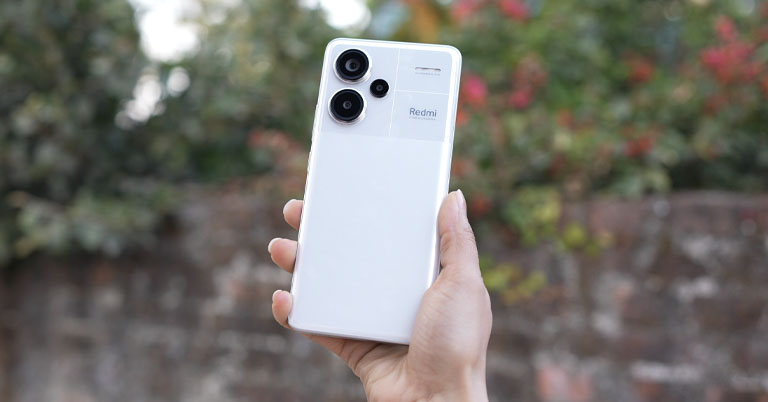
It pretty much has the same camera hardware as its predecessor (Redmi Note 12 Pro+), but thanks to its updated ISP (Image Signal Processor) and the updated imaging pipeline, the Note 13 Pro+ feels like quite a notable upgrade camera-wise. You see, the Redmi Note 13 Pro+ takes quite pleasant-looking photos in general.
And unless you’re shooting in a particularly challenging condition, I don’t think you’re gonna be upset with what it captures. Also, even though it doesn’t have a separate zoom lens, Xiaomi has made the most of that huge 200MP main camera by enabling 4x lossless in-sensor zoom shots. I was also expecting to be impressed with its videography but as it turns out, the Redmi Note 13 Pro+ is a bit lacking in that department.
Redmi 13 Pro+ camera specifications:
| Rear Cameras | • 200MP f/1.65, 1/1.4″, ISOCELL HMX main, OIS |
| • 8MP f/2.2, ultrawide (120° FOV) | |
| • 2MP f/2.4, macro | |
| Front Camera | • 16MP f/2.4 |
| Video | 4K 30 fps (main), 1080p 30 fps (front) |
| Price in Nepal | NPR 47,999 (8/256GB) | Buy here |
| Check the full specifications of Redmi Note 13 Pro+ here | |
Best camera phones under 70K in Nepal [2025]
1. Honor 200
Moving on, the Honor 200 is among the best camera phones under 70K in Nepal. It’s got a 50MP primary, a 50MP telephoto, a 12MP ultrawide, and a 50MP selfie camera, all of which can capture excellent photos. That 2.5x telephoto lens means the Honor 200 has great potential for portrait shots too, and I’m glad to tell you that it absolutely doesn’t disappoint there.

More than anything else, I bet you’re gonna love its “Harcourt Portrait” mode. Honor has teamed up with “Studio Harcourt” in France to come up with three distinct portrait styles (with different lighting effects) for this thing. And I love how I can get really creative with my composition to make the most out of the Honor 200’s portrait capabilities.
Besides portraits, it can also take up to 50x digital zoom shots. Whereas I’m equally impressed with the rest of its cameras. Including when it comes to videos. The Honor 200 handles exposure, highlights, and dynamic range really well too, and if you’re a fan of macro photography, you’ll be glad to know that its ultrawide camera can actually take pretty great closeup photos.
Honor 200 camera specifications:
| Rear Cameras | • 50MP f/1.95, 1/1.56″, IMX906 main, OIS |
| • 50MP f/2.4, IMX856 2.5x telephoto, OIS | |
| • 12MP f/2.2, ultrawide (112° FOV), AF | |
| Front Camera | • 50MP f/2.1 |
| Video | 4K 30 fps (main, front) |
| Price in Nepal | NPR 67,999 (12/512GB) | Buy here |
| Check the full specifications of Honor 200 here | |
2. Vivo V40
Like Honor, Vivo is another smartphone maker that puts a big emphasis on its cameras. And the Vivo V40 is an easy contender for the best camera phone under 70K in Nepal. Vivo went with the same trio of 50MP sensors as the Vivo V30 (review) this time, although the V40 now comes with Zeiss optics. A first for Vivo’s “V” series.

As a result, you get a lot of Zeiss-specific optimizations here. Especially in terms of portraits since Vivo lets you simulate different classic Zeiss lenses for portraits. Like “Biotar”, “Distagon”, “B Speed”, and more. All with different background blurs, aka bokeh balls. I like how Vivo V40 also lets me shoot portraits at three focal lengths — 24mm, 35mm, and 50mm — although it doesn’t have a dedicated telephoto camera.
Other than portraits, the Vivo V40’s main and ultrawide cameras are equally great. The photos have nice colors, great dynamic range, plenty of details, and there’s not much of a contrast between the two of them in terms of colors either. Its selfies are just as impressive — with spot-on focusing and a wide field of view — while the Vivo V40 shoots decent 4K 30 fps videos too.
Vivo V40 camera specifications:
| Rear Cameras | • 50MP f/1.88, 1/1.56″ main, OIS |
| • 50MP f/2.0, ultrawide (119° FOV), AF | |
| • Aura Light (flash) | |
| • Zeiss optics | |
| Front Camera | • 50MP f/2.0, AF |
| Video | 4K 30 fps (main, front) |
| Price in Nepal | NPR 65,999 (12/256GB) | Buy here |
| Check the full specifications of Vivo V40 here | |
3. Samsung Galaxy A55
There has been at least one Samsung phone in every price category I’ve discussed so far, and the Galaxy A55 deservedly takes a spot in the “best camera phone under 70K in Nepal” bracket. As expected, Samsung hasn’t really tried to play the specs game with the Galaxy A55 but the way it has optimized everything is what’s truly remarkable here.
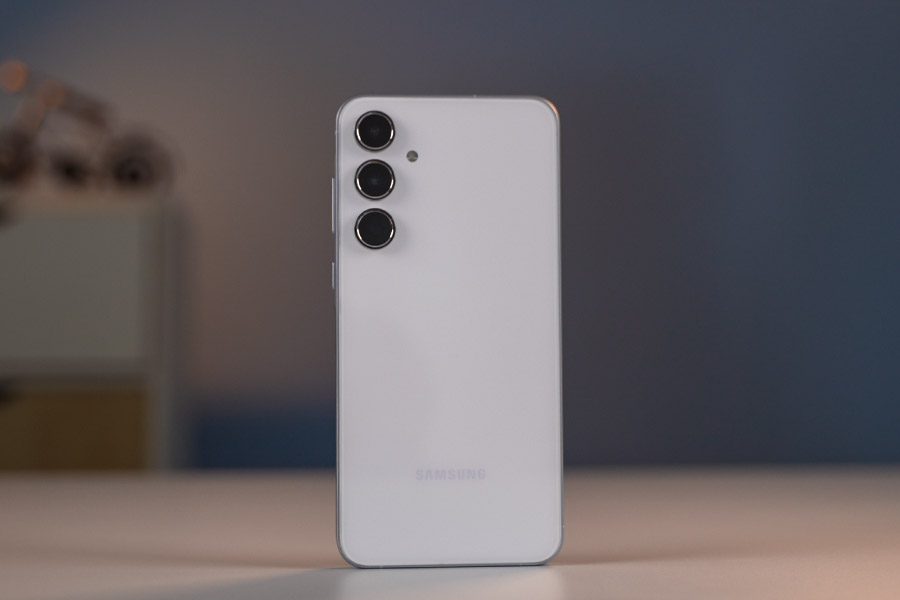
So you’re looking at a triple camera setup on this guy, which includes a 50MP main sensor with OIS, a 12MP ultrawide, and a 5MP macro sensor. And like I’ve said in every other Samsung phone I’ve discussed in this article, the Galaxy A55 also impresses with how it handles dynamic range, colors, and highlight control. It also human subjects really well, even though I still wish Samsung had given a 2x option for portraits.
And yeah, the Galaxy A55 can also shoot nice-looking videos with fairly decent stabilization and all. That too at 4K 30 fps from all of its cameras (except the macro lens, of course). Although I should tell you that Samsung has disabled OIS for videos.
Samsung Galaxy A55 camera specifications:
| Rear Cameras | • 50MP f/1.8, 1/1.56″ main, OIS |
| • 12MP f/2.2, ultrawide (123° FOV) | |
| • 5MP f/2.4, macro | |
| Front Camera | • 32MP f/2.2 |
| Video | 4K 30 fps (main, front) |
| Price in Nepal | NPR 67,999 (12/256GB) | Buy here |
| Check the full specifications of Samsung Galaxy A55 here | |
Best camera phones under 1 lakh in Nepal [2025]
1. Xiaomi 14
So if you want a terrific camera phone under 1 lakh rupees, then check out the Xiaomi 14. We compared its cameras against the Galaxy S24 too, and found that it competes really well against Samsung’s best.
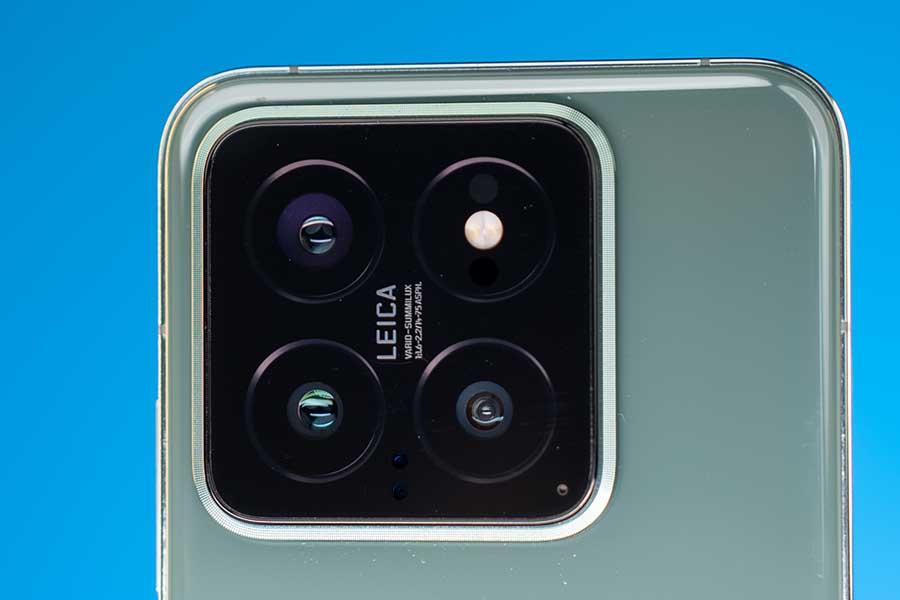
The Galaxy S24 does manage to pull ahead with slightly better optimization in certain instances, like in terms of the skin tone and background bokeh in portraits, exposure handling in low-light conditions, and such. But let me assure you that the Xiaomi 14 is still one of the best camera phones under 1 lakh in Nepal. And a particularly fun one at that as well thanks to all the Leica-specific software tricks.
So first off, there are a couple of image presets you can shoot with here. Including “Leica Authentic”, which goes hard on contrast for a very dramatic look, and “Leica Vibrant” that’s pretty self-explanatory. You can also apply a bunch of filters that simulate the look of different Leica cameras, while even its shutter sound is inspired by Leica’s “M” series cameras. How cool is that?!
Xiaomi 14 camera specifications:
| Rear Cameras | • 50MP f/1.6, 1/1.31″ Light Fusion 900 main, OIS |
| • 50MP f/2.0, 3.2x floating telephoto, AF, OIS | |
| • 50MP f/2.2, ultrawide (115° FOV) | |
| • Leica Summilux optical lens | |
| Front Camera | • 32MP f/2.0 |
| Video | 8K 24 fps (main), 4K 60 fps (main, front) |
| Price in Nepal | NPR 99,999 (12/512GB) | Buy here |
| Check the full specifications of Xiaomi 14 here | |
2. Samsung Galaxy S24 FE
Alright, now if you’re looking for the best camera phone under 1 lakh in Nepal, then Samsung’s “Fan Edition” flagship — the Galaxy S24 FE — should definitely be one of your top choices. It isn’t quite as versatile as the regular Samsung Galaxy “S” flagships, but this thing still offers every bit of a flagship camera experience as you’d expect.

Then again, you should know that the regular Galaxy S24 (review) was available for under 1 lakh rupees not too long ago. Samsung Nepal discontinued that model after launching the Galaxy S24 FE, although after comparing these two side by side, I found that the S24 FE’s cameras are quite comparable actually.
Like… 80 – 90% of the time, the photos from the Galaxy S24 and the S24 FE are pretty much identical. In pretty much every condition. Whether when you’re shooting a landscape in broad daylight, when it gets dark, or even in terms of the videos. There’s that “classic” Samsung processing I’ve been talking about on its images and they’re so darn pleasing to the eyes. The S24 FE’s ultrawide shooter is a bit behind in comparison but yeah, great cameras all around.
Samsung Galaxy S24 FE camera specifications:
| Rear Cameras | • 50MP f/1.8, 1/1.57″, main, OIS |
| • 8MP f/2.4, 1/4.4″, 3x telephoto, OIS | |
| • 12MP f/2.2, ultrawide (123° FOV) | |
| Front Camera | • 10MP f/2.4 |
| Video | 8K 30 fps (main), 4K 60 fps (main, front) |
| Price in Nepal | NPR 94,999 (8/256GB) | Buy here |
| Check the full specifications of Samsung Galaxy S24 FE here | |
3. Honor 200 Pro
The Honor 200 Pro is yet another fantastic contender for the title of the best camera phone under 1 lakh in Nepal. It’s actually quite similar to the Honor 200 I discussed before but with a different, slightly larger primary camera. More specifically, the Honor 200 Pro uses a 50MP 1/1.3″ H9000 main sensor, while the regular Honor 200 has a 50MP 1/1.56″ Sony IMX906 sensor instead.

And for what it’s worth, any amount of upgrade that larger image sensor brings is quite hard to tell since both the Honor 200 and the Honor 200 Pro took almost identical photos in our testing. The “Pro” model did handle things like dynamic range and highlight control a bit better in challenging conditions but yeah.
Apart from the main camera, the Honor 200 Pro impresses with the rest of its lenses too. It’s got that “Harcourt Portrait” mode for different stylistic portraits, I can also rely on it when it gets dark, the selfies from this thing are equally pleasant to look at, whereas this is great for videos as well. I really wish it could do 4K 60 fps videos from the selfie camera but other than that, the Honor 200 Pro is a terrific camera phone under 1 lakh in Nepal.
Honor 200 Pro camera specifications:
| Rear Cameras | • 50MP f/1.9, 1/1.3″, H9000 main, OIS |
| • 50MP f/2.4, IMX856 2.5x telephoto, OIS | |
| • 12MP f/2.2, ultrawide (112° FOV), AF | |
| Front Camera | • 50MP f/2.1 |
| Video | 4K 60 fps (main), 4K 30 fps (front) |
| Price in Nepal | NPR 84,990 (12/512GB) | Buy here |
| Check the full specifications of Honor 200 Pro here | |
Best flagship camera phones in Nepal [2025]
1. Samsung Galaxy S24 Ultra
Okay.
Moving to the flagship territory, the Samsung Galaxy S24 Ultra is an easy pick for those looking for an excellent camera phone. Samsung’s camera game has always been some of the best in the industry and the Galaxy S24 Ultra only takes that legacy a step ahead. Thanks to the updated image processing and the new 5x periscope zoom lens. Which replaces the 10x zoom camera we’ve seen on Samsung’s older “Ultra” flagships.

Now it might seem that going from a 10x to a 5x lens is a massive downgrade but turns out, not really. Matter of fact, it complements the overall camera experience quite nicely with the ultrawide (0.6x), the main (1x), and the telephoto (3x) lenses.
And be it portraits or landscapes, the Galaxy S24 Ultra delivers excellent, consistent photos across the board. Plus, that 5x lens also sits on top of a higher-res 50MP sensor so you won’t be missing out when it comes to zoom photography either.
Not just photos, the Galaxy S24 Ultra is a great camera phone for videos too. Samsung has also made 8K recording better this time, although it’s really the improvements in the 4K videos I wanna talk about since 8K videos just don’t make much sense. Even as we’re nearing 2025. Anyway, the S24 Ultra can shoot excellent, steady 4K 60 fps videos from all of its cameras. And I especially love how I can even switch between the rear and the front camera when I’m recording at such high resolutions here.
Next up, the iPhone 16 Pro and the iPhone 16 Pro Max are some of the best camera phones you can buy in Nepal as well. And it was actually Apple that made the 5x zoom camera that you and I love so much go mainstream last year. ‘Cause after the iPhone 15 Pro Max (review) made its debut with that 5x “Tetraprism” periscope zoom camera, the rest of the industry followed suit almost immediately. And with the iPhone 16 Pro Max, Apple kept most of the same camera hardware as its predecessor. Except it now has a higher resolution 48MP ultrawide camera instead of 12MP. What’s even better is that this year, both the iPhone 16 Pro and the 16 Pro Max have the exact same camera setup. Unlike how that 5x lens was exclusive to the “Pro Max” model last time. The iPhone 16 Pro duo even brings a dedicated “Camera Control” button to quickly let you tinker with different settings like focal length, exposure, and all. But we really didn’t find it that useful, to be honest. And simply using the touchscreen was much quicker and much more intuitive. So here’s to hoping Apple can make the camera button much more useful on next year’s iPhones! Anyway, we love the images from all of its cameras. Granted it’s not a huge leap from the iPhone 15 Pro Max but I’m sure you’re gonna be happy with its cameras. That new 48MP ultrawide camera has noticeable upgrades — especially in terms of details — and as expected, this thing is a proper videography beast. With features like 4K 120 fps Dolby Vision recording, Cinematic Videos, and “Audio Mix” for excellent audio pickup. Our final pick for the best flagship camera phone in Nepal is the Honor Magic 6 Pro. And you know what? The Magic 6 Pro has one unique camera that you’re not gonna find in any other phone available in Nepal: variable aperture. So while every other smartphone has a fixed aperture (lens opening), its 50MP main camera can physically switch between f/1.4 and f/2.0. I would’ve loved it even more if Honor had managed a wider range of aperture control but that’s not a dealbreaker at all. Either way, the Honor Magic 6 Pro takes great photos on most occasions. Honor has clearly tuned it with an extra slice of saturation but I think they look pleasing enough in most cases. Whereas I’m thoroughly impressed with how well it retains details. Most notably from its mammoth 180MP periscope telephoto camera with 2.5x optical zoom. It doesn’t have a large focal length like what you get with the S24 Ultra and the iPhone 15 Pro Max, but that high-res sensor kinda makes up for it. The Magic 6 Pro takes nice-looking portraits and selfies too. Honor’s photos do tend to look somewhat processed compared to other flagship phones, although that works in its favor most of the time. This is also great for shooting videos, with a 4K 60 fps option enabled for all three of its rear cameras. I can also switch between the lenses in the middle of recording, but the Magic 6 Pro can’t do 4K 60 fps selfie videos for some reason. You might also like:Samsung Galaxy S24 Ultra camera specifications:
Rear Cameras
• 200MP f/1.7, 1/1.3″ ISOCELL HP2 main, OIS
• 50MP f/3.4, 1/2.52″, 5x periscope telephoto, OIS
• 12MP f/2.4, 1/3.52″, 3x telephoto, OIS
• 12MP f/2.2, 1/2.55″, ultrawide (120° FOV)
Front Camera
• 12MP f/2.2
Video
8K 30 fps (main), 4K 60 fps (main, front)
Price in Nepal
NPR 184,999 (12/256GB) | Buy here
Check the full specifications of Samsung Galaxy S24 Ultra here
2. iPhone 16 Pro and iPhone 16 Pro Max

iPhone 16 Pro and iPhone 16 Pro Max camera specifications:
Rear Cameras
• 48MP f/1.78, 1/1.28″ main, OIS
• 48MP f/2.2, 1/3.06″, ultrawide (120° FOV)
• 12MP f/2.8, 5x telephoto, OIS
Front Camera
• 12MP f/1.9
Video
4K 60 fps (main, front)
Price in Nepal
• iPhone 16 Pro: NPR 194,999 (128GB) | Buy here
• iPhone 16 Pro Max: NPR 232,499 (256GB) | Buy here
Check the full specifications of iPhone 16 Pro here
Check the full specifications of iPhone 16 Pro Max here
3. Honor Magic 6 Pro

Honor Magic 6 Pro camera specifications:
Rear Cameras
• 50MP f/1.4 – f/2.0, 1/1.3″ OV50H main, OIS
• 180MP f/2.6, 1/1.49″, 2.5x periscope telephoto, OIS
• 50MP f/2.0, 1/2.88″, ultrawide (122° FOV)
Front Camera
• 50MP f/2.0 + 3D depth camera
Video
4K 60 fps (main), 4K 30 fps (front)
Price in Nepal
NPR 159,999 (12/512GB) | Buy here
Check the full specifications of Honor Magic 6 Pro here



















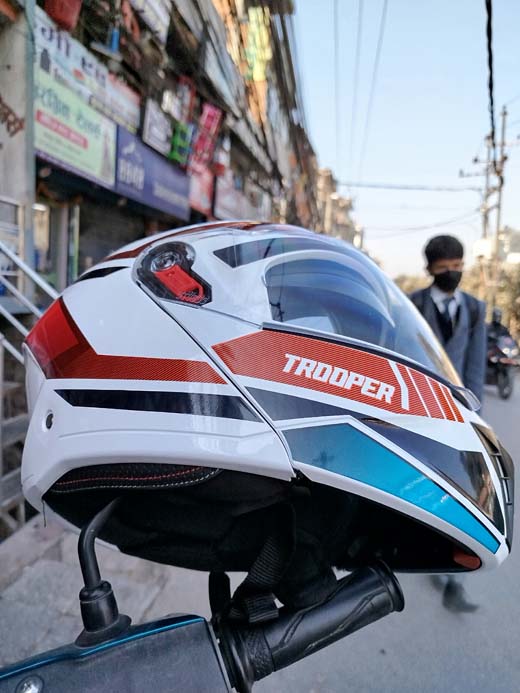



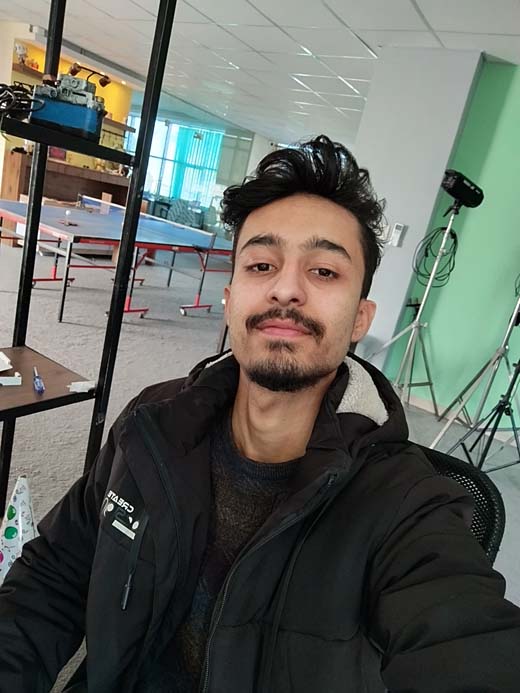
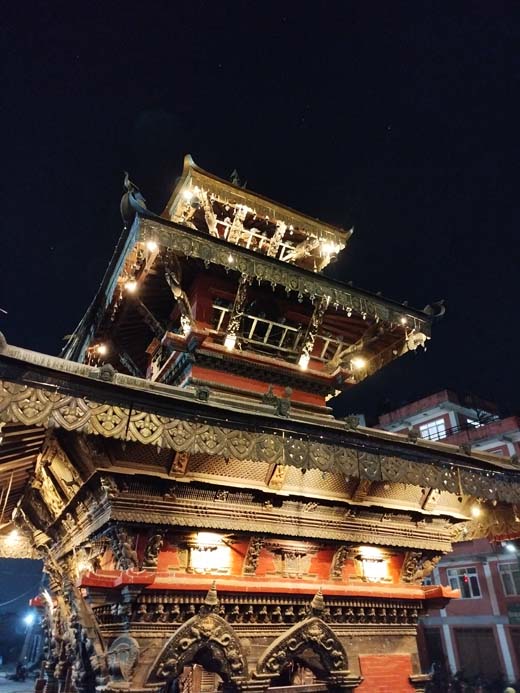







































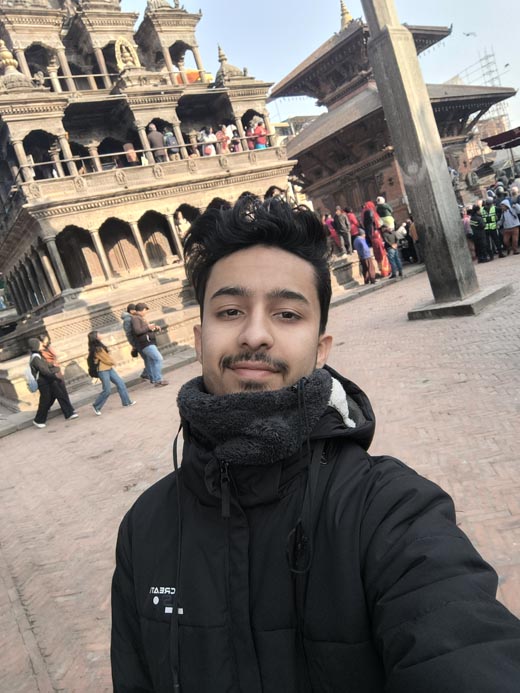






















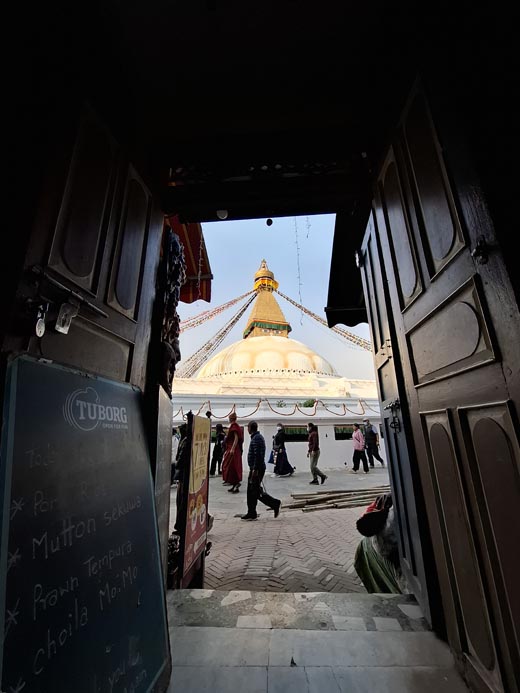

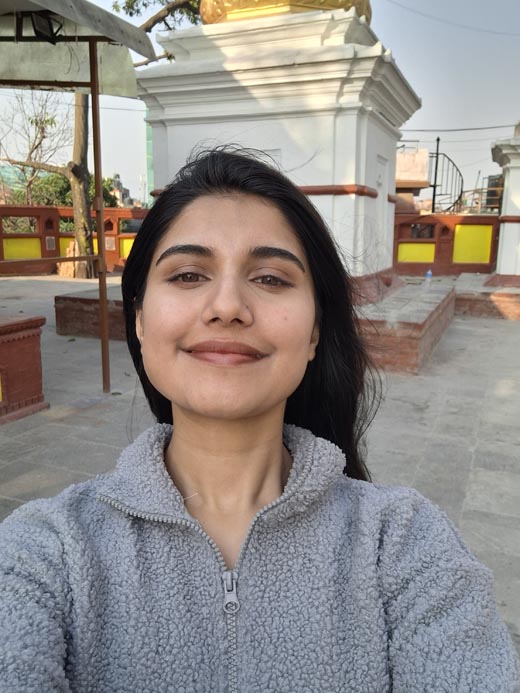





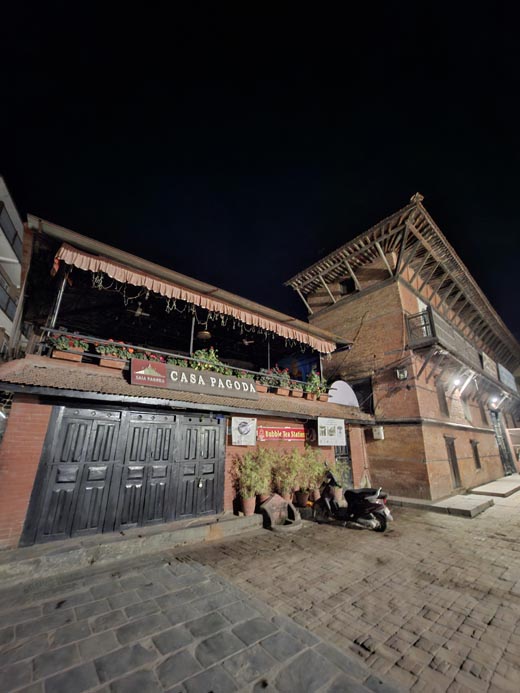



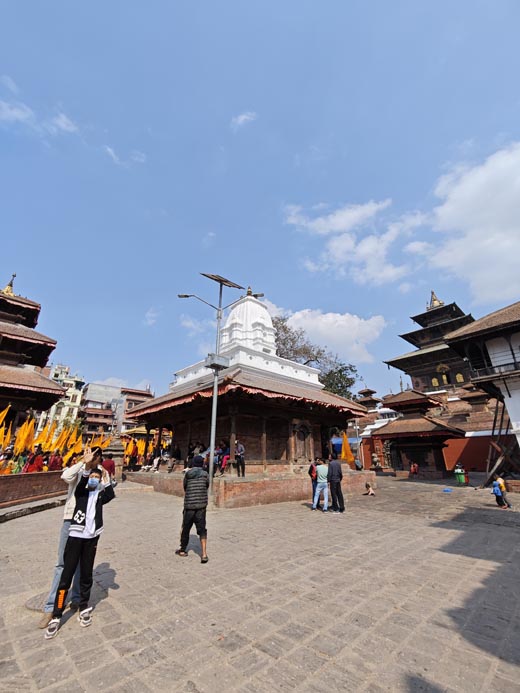

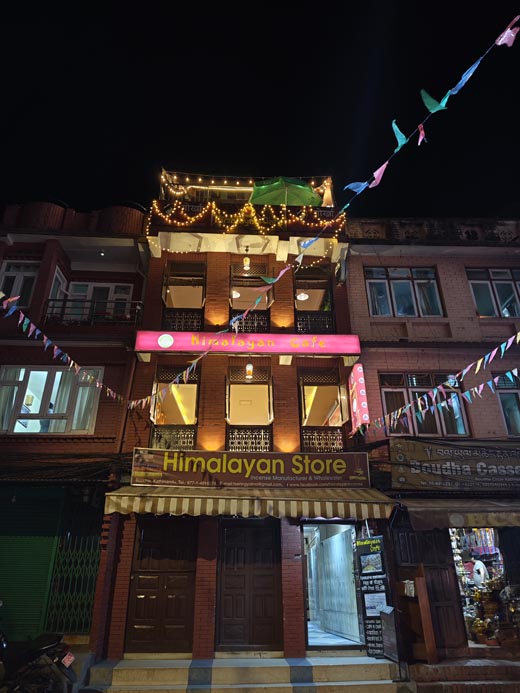
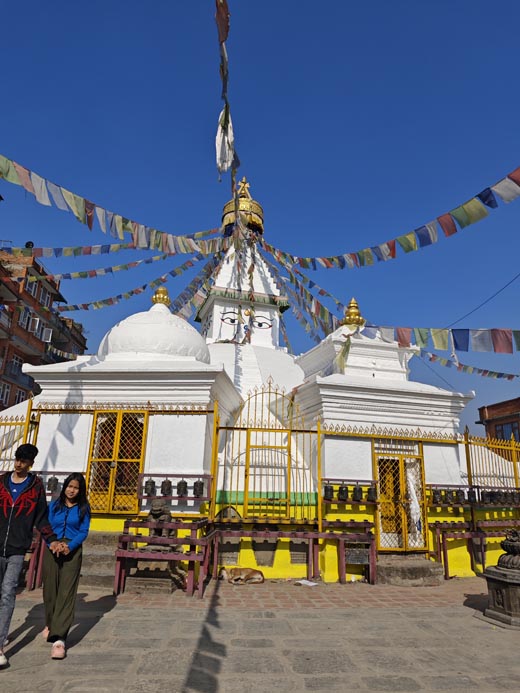























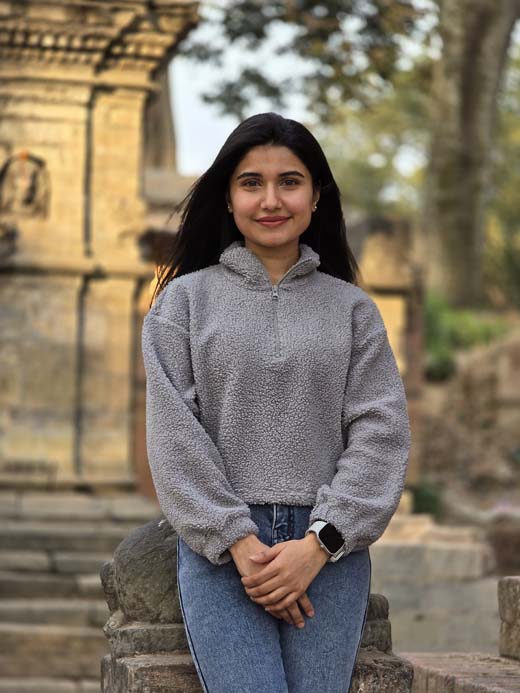



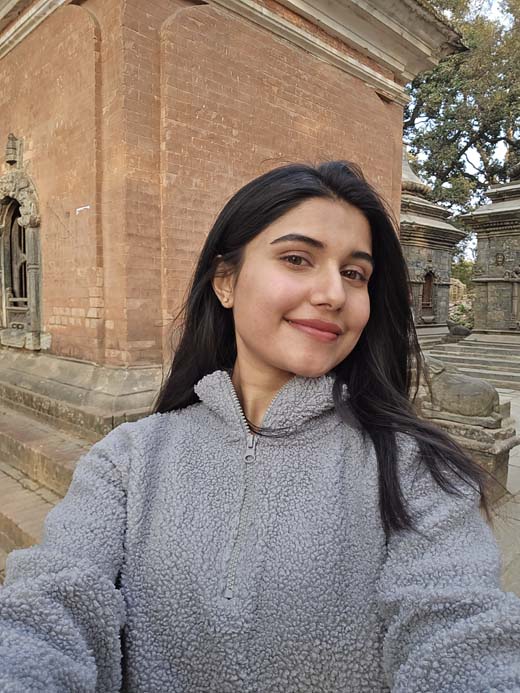


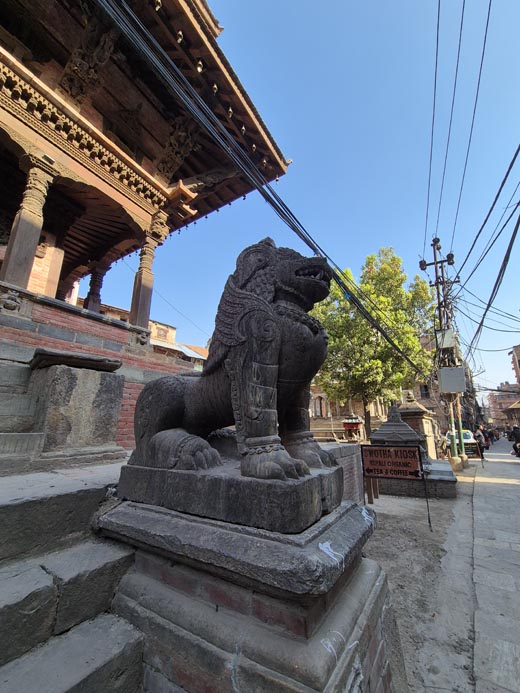
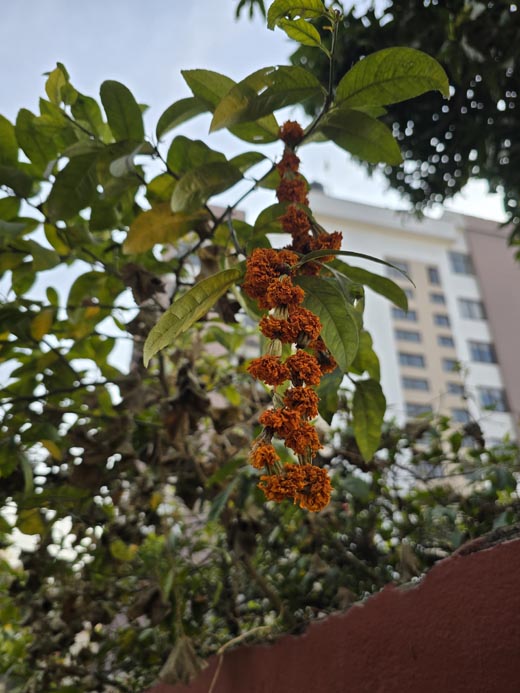






















![Best Gaming Laptops in Nepal Under Rs. 250,000 (रु 2.5 Lakhs) [2025] Best Gaming Laptops Under 2.5 lakhs in Nepal [Feb 2025 Update]](https://cdn.gadgetbytenepal.com/wp-content/uploads/2025/02/Best-Gaming-Laptops-Under-2.5-lakhs-in-Nepal-Feb-2025-Update.jpg)
![Best Gaming Laptops in Nepal Under Rs. 120,000 (रु 1.2 Lakhs) [2025] Best Budget Gaming Laptops Under Rs 120000 in Nepal 2025 Update](https://cdn.gadgetbytenepal.com/wp-content/uploads/2025/05/Best-Budget-Gaming-Laptops-Under-Rs-120000-in-Nepal-2024-Update.jpg)
![Best Laptops Under Rs. 80,000 in Nepal [2025] Best Laptops Under 80,000 in Nepal March 2025 Update](https://cdn.gadgetbytenepal.com/wp-content/uploads/2025/03/Best-Laptops-Under-80000-in-Nepal-March-2025-Update.jpg)
![Best Laptops Under Rs. 70,000 in Nepal [2025] Best Laptops Under 70,000 in Nepal March 2025 Update](https://cdn.gadgetbytenepal.com/wp-content/uploads/2025/01/Best-Laptops-Under-70000-in-Nepal-March-2025-Update.jpg)
![Best Gaming Laptops in Nepal Under Rs. 200,000 (रु 2 Lakhs) [2025] Best gaming lapotp under 2 lakhs Nepal Feb 2025](https://cdn.gadgetbytenepal.com/wp-content/uploads/2025/01/Best-Gaming-Laptops-Under-2-Lakh-Nepal-Feb-2025-Update.jpg)
![Best Mobile Phones Under Rs. 15,000 in Nepal [Updated 2025] Best Phones Under 15000 in Nepal 2024 Budget Smartphones Cheap Affordable](https://cdn.gadgetbytenepal.com/wp-content/uploads/2024/03/Best-Phones-Under-15000-in-Nepal-2024.jpg)
![Best Mobile Phones Under Rs. 20,000 in Nepal [Updated] Best Mobile Phones Under NPR 20000 in Nepal 2023 Updated Samsung Xiaomi Redmi POCO Realme Narzo Benco](https://cdn.gadgetbytenepal.com/wp-content/uploads/2024/01/Best-Phones-Under-20000-in-Nepal-2024.jpg)
![Best Mobile Phones Under Rs. 30,000 in Nepal [Updated 2025] Best Phones Under 30000 in Nepal](https://cdn.gadgetbytenepal.com/wp-content/uploads/2025/01/Best-Phones-Under-30000-in-Nepal.jpg)
![Best Mobile Phones Under Rs. 40,000 in Nepal [Updated 2025] Best Phones Under 40000 in Nepal 2024 Smartphones Mobile Midrange](https://cdn.gadgetbytenepal.com/wp-content/uploads/2024/02/Best-Phones-Under-40000-in-Nepal-2024.jpg)
![Best Mobile Phones Under Rs. 50,000 in Nepal [Updated 2025] Best Phones Under 50000 in Nepal](https://cdn.gadgetbytenepal.com/wp-content/uploads/2025/01/Best-Phones-Under-50000-in-Nepal.jpg)
![Best Flagship Smartphones To Buy In Nepal [Updated] Best flagship phone 2025](https://cdn.gadgetbytenepal.com/wp-content/uploads/2024/07/Best-Flagship-Phones-who-is-it-ft-1.jpg)